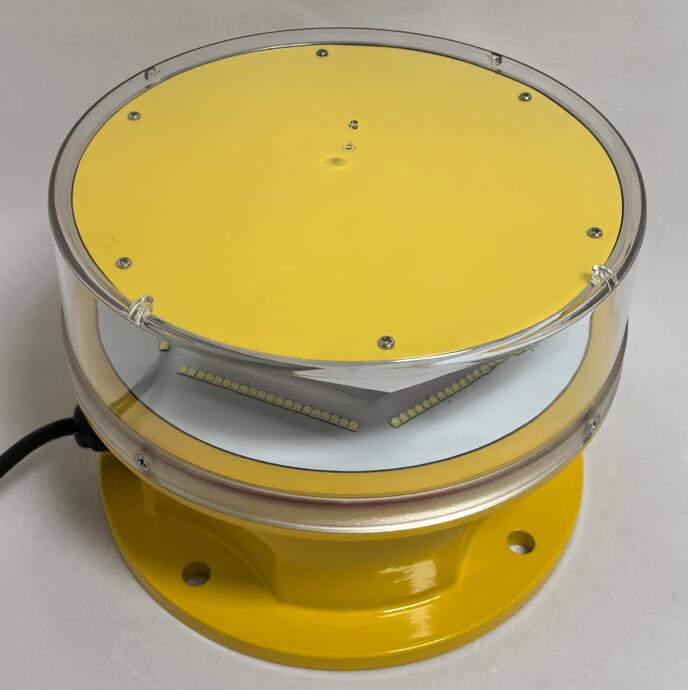Cell Tower Obstruction Light: Safeguarding Skies in the 5G Era
As telecommunications infrastructure expands to meet growing connectivity demands, cell tower obstruction light systems have become critical safety components in modern airspace management. These specialized lighting solutions serve a dual purpose: protecting low-flying aircraft while enabling the uninterrupted operation of essential communication networks. This article explores the evolving role of cell tower obstruction light technology, current industry standards, and innovative solutions addressing today's aviation safety challenges.
The Critical Need for Cell Tower Lighting
1. Aviation Safety Imperative
With over 100,000 cell towers in the U.S. alone, cell tower obstruction light systems prevent potentially catastrophic collisions with:
Medical evacuation helicopters
Agricultural aircraft
Law enforcement helicopters
Low-altitude commercial flights

2. Regulatory Framework
The FAA mandates cell tower obstruction light installations on all structures exceeding 200 feet (61 meters), with specific requirements for:
Light intensity (measured in candelas)
| cell tower obstruction light |
Flash patterns and durations
Color specifications (red/white combinations)
Vertical spacing on tall structures
3. Urbanization Challenges
The proliferation of 5G infrastructure creates new lighting considerations for:
Dense urban environments
| cell tower obstruction lights |
Mountainous terrain
Coastal regions with frequent low clouds
Modern Lighting Technologies
1. Advanced LED Systems
Contemporary cell tower obstruction light solutions feature:
50,000+ hour lifespans
Instant-on capability (no warm-up)
Precise beam control
80% energy savings versus traditional lighting
2. Smart Monitoring Capabilities
Next-generation systems incorporate:
Automated fault detection
Remote brightness adjustment
Real-time status reporting
Predictive maintenance alerts
3. Dual-Lighting Systems
Combination units provide:
Red steady-burning lights for nighttime
High-intensity white strobes for daytime
Synchronized flash patterns across multiple towers
Installation Best Practices
1. Strategic Placement
Optimal cell tower obstruction light positioning considers:
Tower height and structure type
Surrounding terrain elevation
Proximity to airports/helipads
Local wildlife patterns
2. Maintenance Protocols
Effective upkeep requires:
Quarterly visual inspections
Annual photometric testing
Immediate repair of damaged units
Cleaning of lenses and solar panels
3. Environmental Considerations
Special adaptations address:
Ice accumulation in northern climates
Salt corrosion in coastal areas
Extreme temperature fluctuations
High wind load resistance
Emerging Innovations
1. Aircraft-Activated Lighting
Experimental systems using:
Radar detection
ADS-B signals
Infrared sensors
to illuminate only when aircraft approach
2. Reduced Light Pollution Solutions
New designs featuring:
Directional lighting arrays
Adaptive intensity control
Wildlife-friendly wavelengths
3. Hybrid Power Systems
Sustainable options combining:
Solar panels
Wind turbines
Battery backups
Grid connections
Special Application Cases
1. Stealth Tower Lighting
Minimalist designs for:
Historic districts
Scenic areas
Residential neighborhoods
2. Temporary Installation Solutions
Rapid-deployment units for:
Disaster recovery
Special events
Construction projects
3. Offshore Tower Lighting
Marine-grade systems for:
Coastal communication towers
Offshore wind farm installations
Oil platform communications
Future Development Trends
1. AI-Optimized Systems
Machine learning applications for:
Dynamic brightness adjustment
Predictive failure analysis
Weather-responsive operation
2. Integrated Sensor Packages
Combined lighting with:
Structural health monitoring
Environmental sensors
Security surveillance
3. Drone Compliance Features
New standards addressing:
UAV traffic management
Drone detection systems
Anti-collision protocols
The cell tower obstruction light has evolved from a simple regulatory requirement to a sophisticated aviation safety system that balances technological, environmental, and operational demands. As 5G networks expand and urban air mobility develops, these lighting solutions will play an increasingly vital role in maintaining safe airspace while supporting critical communications infrastructure.
Future advancements will likely focus on smarter, more efficient systems that minimize environmental impact while enhancing safety performance. The ongoing challenge for engineers and regulators will be developing cell tower obstruction light standards that keep pace with both telecommunications innovation and evolving aviation needs, ensuring these silent guardians continue to protect lives while enabling global connectivity.
